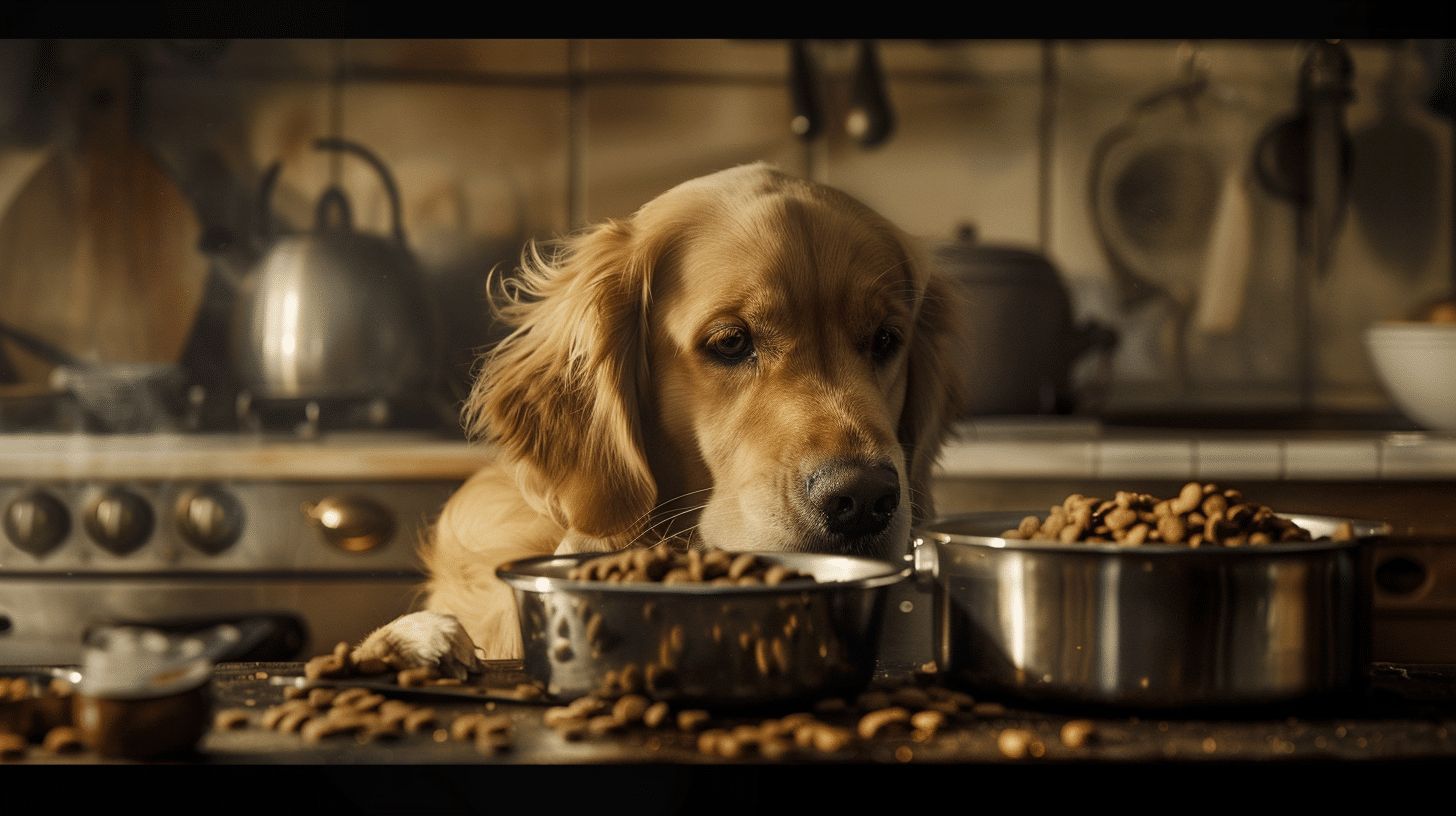How to determine the appropriate calorie intake for a dog to maintain a healthy weight?

As responsible pet owners, one of your top priorities is ensuring your dog enjoys a healthy and balanced life. One crucial aspect of this responsibility is understanding the appropriate calorie intake for your dog. Just like humans, dogs need a certain number of calories each day to maintain a healthy body weight, support their energy levels, and prevent obesity-related health issues. If you overfeed your dog, it may lead to excessive weight gain, while underfeeding can lead to malnutrition. This article will guide you through understanding the ideal caloric intake for your dog based on various influencing factors.
Understanding Your Dog’s Resting Energy Requirement (RER)
Before diving into the specifics of your dog’s caloric needs, it’s essential to understand the concept of Resting Energy Requirement (RER). The RER refers to the amount of energy your dog needs to perform basic bodily functions such as breathing and heart function, while at rest.
Also to discover : How to safely remove a pet from a potentially dangerous wildlife encounter?
Calculating your dog’s RER is a crucial first step to determine the right caloric intake. This value is often calculated using the dog’s body weight in kilograms raised to the ¾ power by 70. For example, if your dog weighs 15 kg, the RER would be 70(15 kg)^0.75 = 674 Calories/day. However, this is just the base for determining the total caloric requirement, which also includes energy for activity and growth.
Considering Your Dog’s Condition and Lifestyle
Now that you have a rough idea of your dog’s RER, you need to consider your pet’s daily activity level and overall body condition. These factors hugely impact the daily caloric requirement for your dog.
Also to discover : What is the most effective way to stop a dog from barking at guests?
Active dogs typically need more calories to sustain their energy levels. If your dog is a breed that naturally has a high energy level or if it gets a lot of exercise every day, you should consider increasing its caloric intake. On the other hand, older dogs or more sedentary dogs might require fewer calories.
Your dog’s body condition also plays a role in the calorie equation. Dogs that are overweight might need a reduced calorie diet to reach an ideal weight, while underweight dogs might need extra calories to attain a healthier weight.
Factoring in the Dog’s Age and Health Condition
In addition to activity levels and body condition, your dog’s age and health status will significantly influence its caloric needs. Puppies, due to their rapid growth and high energy levels, require a diet higher in calories.
Conversely, senior dogs tend to be less active and have slower metabolic rates, leading to a lower caloric requirement. If your dog is of advanced age or has a particular health condition, it is recommended to consult with a veterinarian to determine the suitable dietary intake.
Analyzing the Dog’s Diet
Understanding the caloric content of your dog’s food is essential in calculating the appropriate feeding portions. Different types of dog food will have different calorie contents.
When you look at the label on your dog’s food, you will find the number of kilocalories (kcal) per gram. This information is vital in helping you calculate how much of that particular food your dog needs each day. If the food is high in calories, you will need to feed less of it to maintain the same calorie intake.
It’s also important to note that the quality of calories is as important as the quantity. Dogs need a balanced diet that includes proteins, carbohydrates, and fats. Make sure the food you feed your dog provides not just the right amount of calories, but also the correct balance of nutrients.
Regular Monitoring and Adjustments
Even after calculating the initial caloric intake, it’s important to continuously monitor your dog’s weight and make necessary adjustments. Regular weight checks are essential to ensure your dog is maintaining a healthy weight. If you notice any significant changes in your dog’s weight or overall health, it’s advisable to consult your vet.
Remember, the right caloric intake for your dog is not a fixed number. It can change based on a variety of factors such as age, activity level, health status, and even the seasons. You should be prepared to adjust your dog’s diet as needed to make sure they remain at an optimal weight and health condition.
Finding the right balance in your dog’s diet can be a bit of a juggle, but with the right knowledge and regular monitoring, you can ensure your pet has a healthy and happy life. Remember, every dog is unique, and what works for one might not work for the other. Stay informed, stay observant, and stay in tune with your dog’s needs.
The Role of Breed, Size, and Life Stage in Determining Caloric Intake
Both the breed and size of your dog play a significant role in determining the appropriate caloric intake. Small breeds usually have a faster metabolism and may require more calories per pound than large breeds. Larger dogs, especially giant breeds, have slower metabolic rates and may require fewer calories per pound of body weight than smaller breeds.
Moreover, the life stage of your dog is another crucial factor. As mentioned earlier, puppies have higher energy requirements due to their rapid growth and, therefore, need more calories. Adult dogs, typically between the ages of one and seven years, will require fewer calories compared to puppies. Once a dog reaches its senior years, it may lead a more sedentary lifestyle, thus reducing its caloric needs.
For expecting or nursing female dogs, increased caloric intake is necessary to support the health of the mother and puppies. However, as always, any increase should be monitored and adjusted accordingly to prevent excessive weight gain.
It’s also worth noting that certain breeds are prone to specific health conditions, such as obesity, and thus may have different caloric needs. For instance, breeds like Labrador Retrievers and Beagles are often more susceptible to weight gain compared to others. Therefore, owners of these breeds should be more vigilant about their dogs’ diets and ensure they are receiving the appropriate calorie intake to maintain an optimal body condition score.
Utilizing a Dog Calorie Calculator and Consulting a Vet
While determining your dog’s caloric needs may seem complicated, several resources can assist you in this task. A dog calorie calculator is a tool that can help you estimate the number of calories your dog needs per day based on their weight, activity level, and life stage.
However, these calculators should be used as a guide and not a definitive answer. Each dog is unique and may have specific dietary needs that can’t be accurately predicted by a calculator.
Therefore, it’s highly recommended to consult a vet or a canine nutritionist. They can help you assess your dog’s health, body condition, and lifestyle and give you a more accurate number for the daily caloric intake. They can also assist in creating a balanced diet plan that meets all your dog’s nutritional needs, ensuring it is getting the right amount of proteins, carbohydrates, and fats in its meals.
It’s also advisable to check with your vet before starting any weight loss or gain program for your dog. They can guide you through the process and ensure it’s done safely, without putting your dog’s health at risk.
Conclusion
Understanding your dog’s appropriate calorie intake is crucial for maintaining its healthy weight and overall wellbeing. Factors such as the dog’s resting energy requirement, activity level, body condition, breed, size, age, and health condition all contribute to the number of calories your dog needs daily. Regular monitoring and adjustments to their diet, coupled with a balanced and nutritious pet food, can help ensure your furry friend stays in the best health possible.
The use of tools such as a dog calorie calculator can aid you in this process. However, it’s always best to consult a vet or a canine nutritionist for personalized advice. Remember, every dog is unique, and what works for one may not necessarily work for another.
Maintaining your dog’s ideal weight and body condition is not a one-time task but a continuous commitment. But with careful observation, regular check-ups, and lots of love, you can help your pet lead a healthy, happy, and fulfilling life.
